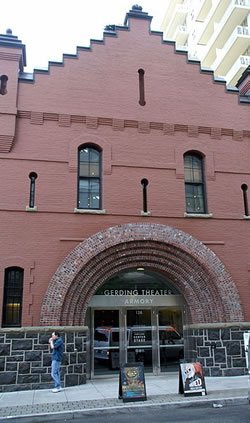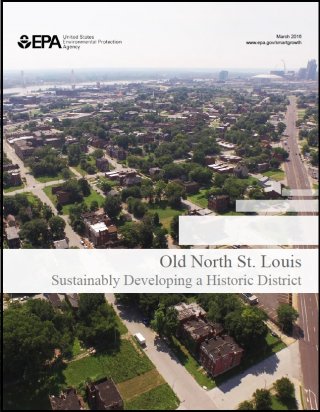Smart Growth and Preservation of Existing and Historic Buildings

The preservation and renovation of historic buildings can play an important part in revitalizing a neighborhood or community while helping to maintain its local character and unique characteristics. Renovating existing buildings can also provide a more sustainable alternative to site redevelopment.
A historic building can be an anchor institution and a tangible symbol of a community's interest in honoring its heritage, valuing its character and sense of place, getting the most out of prior investments in infrastructure and development, and encouraging growth in already-developed areas.
The renovation of a historic property can often provide a meaningful starting point for the redevelopment of a block, street, or district. Repurposing and renovating existing buildings—particularly those that are vacant—can also help preserve an area's unique sense of place in the face of new development and change. Redesigning existing buildings to serve new functions, often referred to as "adaptive reuse," helps preserve the historical and social fabric of the place, while creating new opportunities.
Renovating existing buildings, historic or otherwise, is an important approach in reducing greenhouse gas emissions in the buildings sectors. A new, green, energy-efficient office building that includes as much as 40 percent recycled materials would nevertheless take approximately 65 years to recover the energy lost in demolishing a comparable existing building.1 This is because new construction is a carbon-intensive part of a building's life-cycle, since the clearing of land or demolition of existing structures, as well as the production and transport of materials, requires and produces carbon emissions. This is known as the building's "embodied carbon."
When renovating an existing building, it is important to improve its environmental performance. Codes and many green building standards do not always provide a clear path for redeveloping and revitalizing historic and other existing buildings to achieve environmentally sustainable outcomes. For example, replacing windows and doors—key elements for an energy-efficient building envelope—may a challenge in the preservation of the historic integrity of older buildings.
Communities that seek to both make environmentally sustainable investments and protect their historic assets must resolve standards and policies that can at times conflict and could make some projects financially infeasible. Yet the value in overcoming these obstacles is clear—not only for the energy benefits they offer, but also for broader economic, cultural, and land use preservation advantages.
The following resources can help:

- Lead Renovation, Repair, and Paining Program (EPA): Describes policies and recommended practices to safely renovate and protect against the dangers of lead often found in older buildings.
- Federal Rehabilitation Tax Credits (IRS): Developers can use the Rehabilitation Tax Credit (often referred to as the historic preservation tax credit or historic tax credit) to renovate historic buildings. Sites must be a certified historic structure by the National Park Service. This webpage details eligibility and programmatic requirements.
- Technical Preservation Services (National Park Service): A compilation of historic building preservation resources, including information on tax incentives, standards and guidelines, sustainability, and other publications.
- Tribal Historic Preservation Program (National Park Service): Resources, application portal, and funding information for the Tribal Historic Preservation Program.
- Old North St. Louis: Sustainably Developing a Historic District (EPA, 2016): Technical assistance report documenting the collaboration with the Old North St. Louis neighborhood to develop a vision for new growth and development in a manner that protects, preserves, and rehabilitates its historic character. The plan also sought to incorporate environmentally sustainable quality of life enhancing features.
- National Trust for Historic Preservation: This page provides guidance documents, case studies, a community forum, and other key resources.
- National Conference of State Historic Preservation Officers: A nonprofit providing technical assistance, funding information, and other resources for historic preservation professionals.
1 Moe, Richard. "Sustainable Stewardship." Traditional Building, June 2008.
